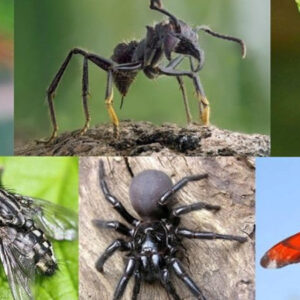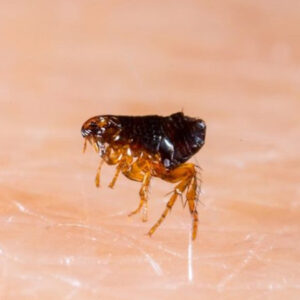
Ever noticed strange tiny red bugs on concrete in your home? They’re definitely not baby cockroaches. Cockroaches don’t have a lustrous coat like that and are much larger in size, too. These red bugs are called clover mites, and they can do a lot of damage to your lawns. Here’s everything you need to know about clover mites and getting rid of them.
What Are the Tiny Red Bugs on Concrete?
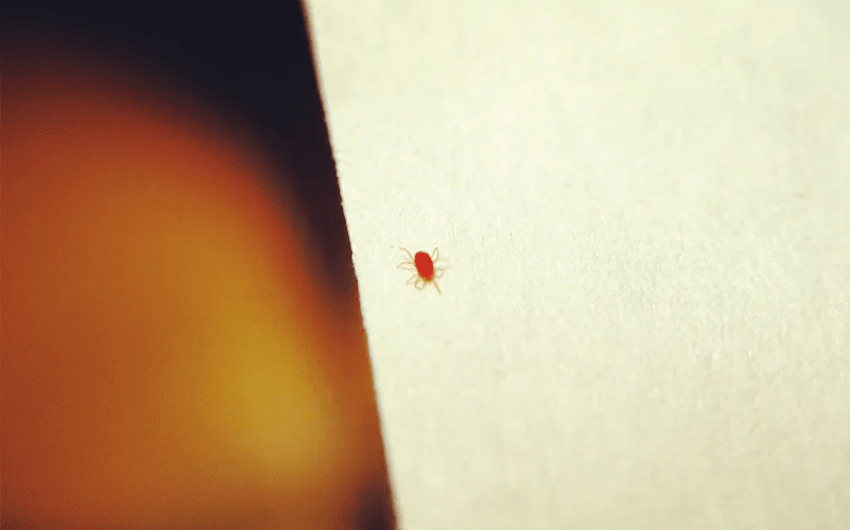
Image source: Pinterest
As mentioned earlier, the tiny red bugs on concrete are called clover mites. Their scientific classification is Bryobia Praetiosa, a species of mite. Adult clover mites are 0.75–0.85 mm in length, reddish-brown in color, and have an oval body. They’re considered a pest because they feed on plants and can destroy the landscape of yards.
Clover mites are distributed across all continents, so you will probably come across them no matter where you live. A fun fact about them, clover mites are also Parthenogenetic, which means they can reproduce asexually. All clover mites are female and their eggs do not need to be fertilized to develop.
Why Do I Have Tiny Red Bugs on Concrete?
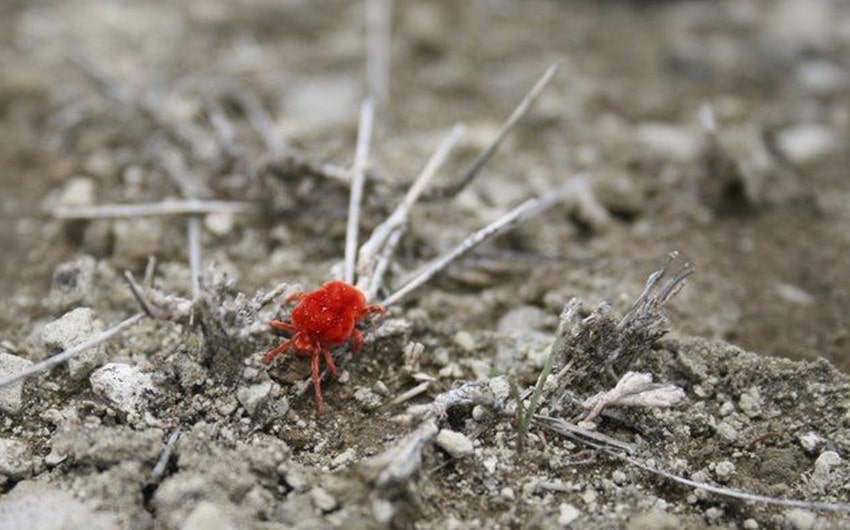
Image source: Pinterest
Indoors
Heavy rain or excessive heat can lead to clover mites becoming a pest in your house. When the conditions outdoors become unfavorable for survival, it stimulates massive numbers of clover mites to start entering buildings through cracks, windows, and doors.
Mites are incredibly small, so they only appear as moving red or dark spots to the naked eye. If you crush them, it leaves behind a red spot. They don’t lay eggs indoors, so it’s unlikely you’ll ever have a serious infestation. And the ones that appear indoors will likely die from dehydration within a few days but they leave red streaks, which can be annoying to clean.
Outdoors
Clover mites have a tendency to show up on your lawn during springtime. They need food, moisture, and moderate warmth to survive. If you live in a region where dry heat is more common, it’s unlikely clover mites will touch your lawn.
But otherwise, they’ll probably be on the grass or around open taps because they need a water source too. Clover mites are especially attracted to nutrient-rich soils. The more fertile your yard is, the more clover mites thrive.
Having clover mites outdoors is a much bigger nuisance than indoors, because they choose to lay their eggs close to where they can feed. Each mite can lay about 70 eggs individually. Mites are incredibly temperature-sensitive.
If the heat exceeds 100℉, it can kill them, so they lay their eggs in dry protected areas. The eggs remain dormant until the temperatures are favorable, which happens around spring.
Impact of Tiny Red Bugs on Concrete

Image source: Pinterest
Clover mites feed on the plants in your yard. So if you ever have a clover mite infestation, you’ll start to notice your yard has light brown, dead patches of grass. Up close, their feeding damage appears as irregular silver streaks on the leaves.
Clover mites don’t damage concrete, furniture, upholstery, or clothing, but they can leave streaks on all of these things. They also don’t last long indoors, so the only real problem with having clover mites indoors is that they’re an eyesore to look at. Especially when they come in swarms.
Are They Harmful to Humans?
Clover mites are not harmful to humans as they don’t bite. However, there are other species of mites that do, so you should be able to tell the difference when you see one.
The worst-case scenario with having a clover mite infestation is if your indoor environment is favorable for their reproduction. Clover mites can reproduce effortlessly, and their eggs don’t need to be fertilized to hatch.
How To Get Rid of Clover Mites
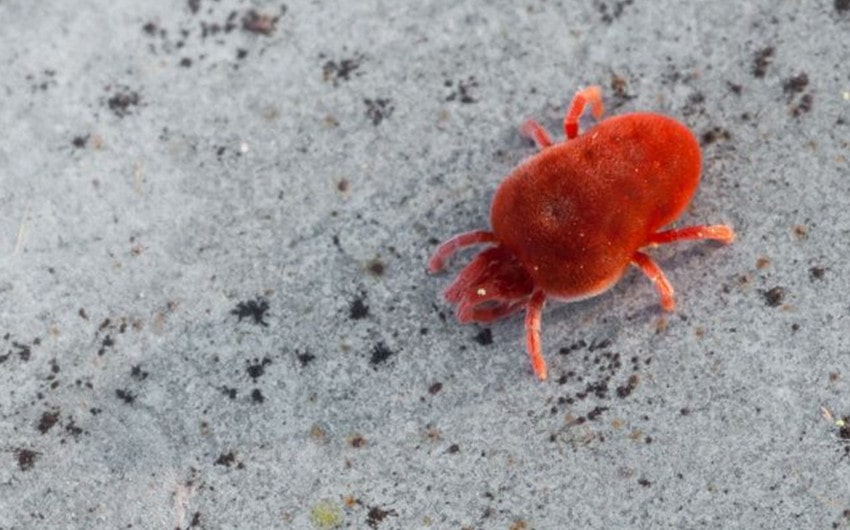
Image source: Pinterest
Here are a number of ways you can get rid of clover mites and some preventative measures to curb further infestations.
#1. Remove the Clover Mites Manually
If there aren’t many or they’re concentrated in one area of your house, then you should be able to easily collect them all with a broom and dustpan. They may leave some red streaks but you can mop that up later.
Alternatively, you could also use a vacuum to catch them. Just make sure you seal and dispose of the vacuum bag in a garbage can someplace far from your home.
#2. Use Vinegar for Clover Mite Control
Clover mites are repelled by the smell of vinegar. It’s a 100% natural and effective pesticide. Just dilute some vinegar with water into a spray bottle and spray the areas of your house where clover mites tend to congregate based on past experiences or your best estimation.
#3. Use Soap Water
Like vinegar, soap water also deters clover mites. Add it to a spray bottle and spray the areas of your house you’d like to keep clover mite-free.
#4. Use Boric Acid
Boric Acid is a weak acidic hydrate that you can purchase at supermarkets in the pest-control aisle. It’s sold in the form of a powder and has antiseptic properties that can control a huge variety of pests including insects, spiders, mites, algae, molds, fungi, and even weeds. Sprinkle it along the lines of your walls and corners to prevent clover mite invasions.
Featured image source: Pinterest.com


